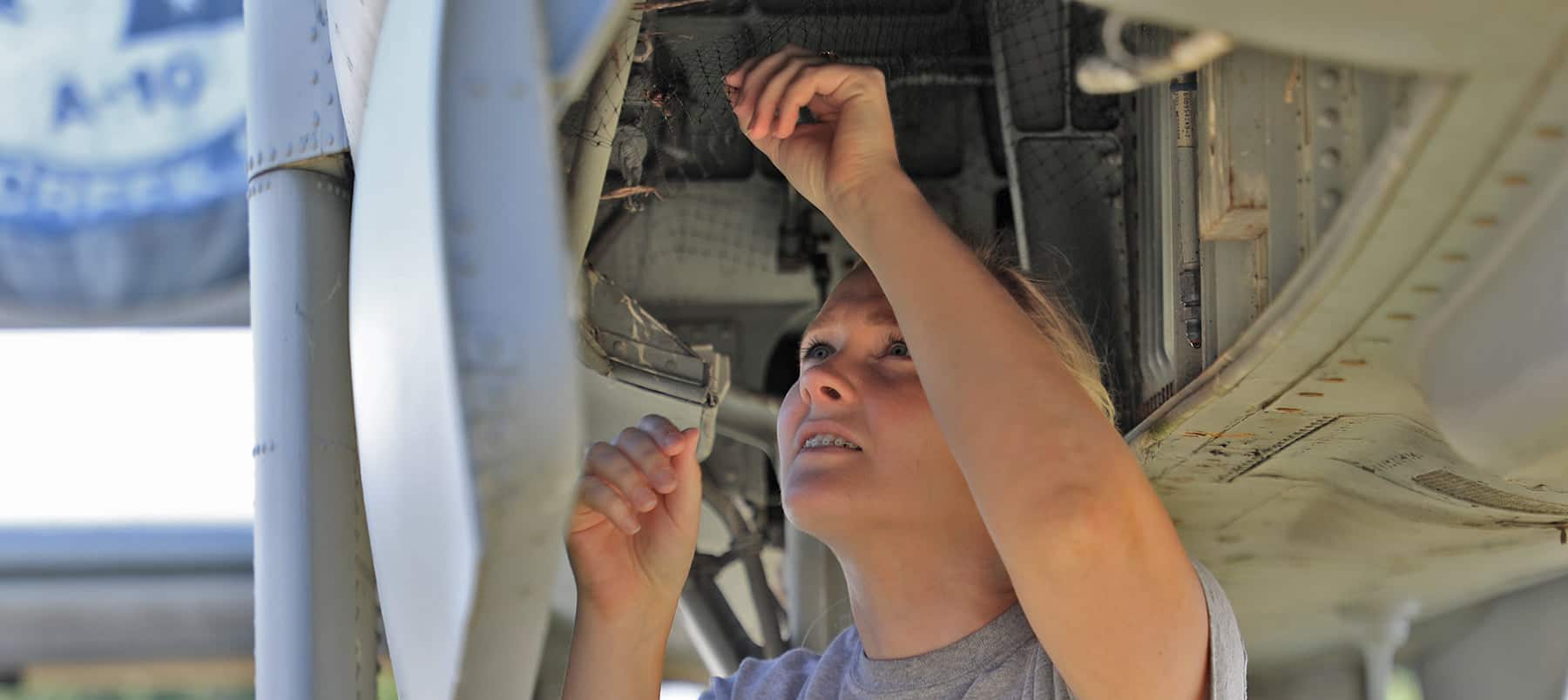Share this article
Protecting planes that don’t ever fly
It isn’t unusual for Wildlife Services airport biologists to be working at military airbases assisting in efforts to keep aviation personnel and assets, as well as birds, safe from bird/aircraft strikes. Most often the work consists of habitat management and dispersal, but the 127th Wing of the Michigan Air National Guard recently focused on an unusual project.
TWS member Megan Baker, a USDA airport wildlife biologist stationed at the Selfridge Air National Guard Base, also is working to keep aircraft—that never leave the ground—safe from bird damage. It is all part of a preventative approach using integrated management to reduce bird presence around the airfield.
The project consists of placing netting and foam around open areas of static aircraft displays to prevent nesting at the base’s Selfridge Military Air Museum. The presence of animals inside of the displays can lead to moisture build-up and damage to the preserved aircraft.
The base recently featured Baker and Captain Jennifer Logsdon, Flight Safety Officer for the 127th Wing.
Wildlife Services assisted 138 military and 99 joint-use (civil/military) airfield in FY20.
Header Image: TWS member Megan Baker, a USDA airport wildlife biologist stationed at the Selfridge Air National Guard Base, works to keep museum aircraft safe from bird damage. Credit: Staff Sgt. Drew Schumann








